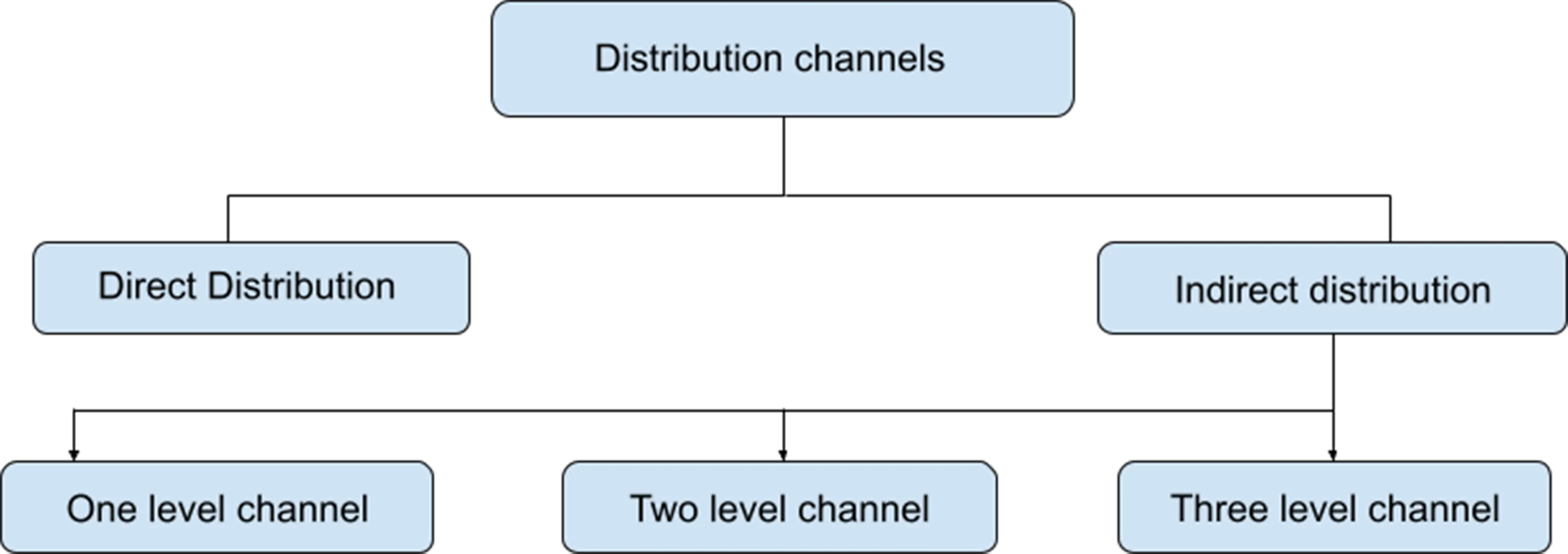Effective product distribution is the backbone of success in industries like FMCG, CPG, dairy, beverages, cosmetics, OTC, and pet care. It determines how efficiently products move from manufacturers to consumers whether through wholesalers, retailers, or direct-to-customer channels.
For managers and business owners, understanding the types of distribution channels is the first step in designing a strong market presence. Once the right channels are identified, the next move is to define the distribution strategy deciding how widely or selectively products should be made available across those channels.
In this blog, we’ll explore both:
✔ The main types of distribution channels that shape product flow.
✔ The key distribution strategies intensive, selective, exclusive, and hybrid and how they impact brand reach and profitability.
We’ll also look at how modern tools like Distributor Management Systems (DMS) make it easier to implement these strategies effectively and track results in real time.
Types of Distribution Channels
There are two main types of distribution channels, direct and indirect.
Flow chart image:

1. Direct Distribution
In this model, manufacturers sell directly to customers without intermediaries.
✨ Examples:
Company-owned outlets, e-commerce websites, direct-to-consumer (D2C) apps.
✨ Advantages:
Better profit margins, brand control, and direct customer engagement.
✨ Limitations:
Not scalable for fast-moving, high-volume products like packaged foods or beverages.
2. Indirect Distribution
Indirect channels dominate industries like FMCG and retail. They involve intermediaries such as wholesalers, distributors, and retailers.
a) One-Level Channel

Suitable for niche or smaller brands supplying directly to local stores.
b) Two-Level Channel

The backbone of Retail distribution, where distributors buy in bulk and supply retailers.
Benefits
✔ Reduces manufacturer’s logistics burden.
✔ Distributors ensure wide coverage and timely stock replenishment.
✔ Retailers gain easy access to stock and credit.
c) Three-Level Channel

Ideal for large-scale or widespread markets.
Drawback
✔ Can create delays and visibility gaps due to multiple layers.
Types of Distribution Strategies
Intensive Distribution
With intensive distribution, a company floods the market by placing products in all possible outlets. The goal is widespread availability – products should be found “everywhere” the target customers shop. This approach suits low-cost, frequently purchased items (e.g. soft drinks, dairy, detergents) where consumers expect maximum convenience.
FMCG giants like Unilever use intensive distribution for brands such as Dove soap and Hellmann’s mayonnaise, ensuring they appear in supermarkets, small groceries, convenience stores and even online retailers. This strategy maximizes market reach and brand exposure, but it requires robust logistics and can dilute control. In practice, companies planning an intensive FMCG distribution strategy must optimize routes, inventory and retail placement to meet widespread demand.
Selective Distribution
Selective distribution uses a limited number of carefully chosen retailers or channels to sell a product. The brand selects outlets that align with its image or target audience. For example, a specialist cosmetics line might be sold only through high-end beauty stores or salons, while certain electronics or machinery brands sell through authorized dealers.
This approach balances wider availability with quality control - it’s often used when a product needs retailer expertise or to maintain a premium perception. Companies like Dolce&Gabbana and McDonald’s (for certain products) have long used selective distribution, choosing specific locations or partners for higher sales. Selective placement can boost brand prestige and allow better promotional support at chosen outlets, though it limits how many customers can be reached compared to intensive distribution.
Exclusive Distribution
Exclusive distribution takes selectivity even further: a manufacturer appoints only one (or very few) retailers or partners to carry its product. The idea is to create scarcity and prestige. If a product is found in only a single store or distributor per region, it can appear more special or premium.
For instance, high-end luxury goods (like designer watches or sports cars) often use exclusive distribution to maintain an elite image. Tech giant Apple is a classic example – many of its products are sold primarily through Apple’s own branded stores (shown above) and a small set of authorized partners. This exclusive channel ensures a consistent premium experience. The downside is reduced market reach: by definition, fewer customers have access in the short term. But the strategy can yield higher margins and strong brand control.
Hybrid Distribution
Hybrid distribution combines multiple channels or strategies to maximize reach and flexibility. In practice, companies mix elements of direct and indirect sales, online and offline channels. Sephora’s business model illustrates this: it sells its own-brand and partner beauty products in standalone Sephora stores and within partner retailers (e.g. in department stores), plus online.
Likewise, Starbucks uses a hybrid approach: besides its own cafes, it sells packaged coffee and ready-to-drink beverages through grocery chains and e-commerce platforms. By blending channels, hybrid strategies capture different customer segments and buying occasions. For example, one company might use intensive distribution in everyday outlets while maintaining exclusive deals for premium lines, or sell through retail partners and direct-to-consumer e-commerce simultaneously. The key is coordination – ensuring inventory, promotions and brand experience are managed consistently across all channels.
What is a Distributor Management System (DMS)?
As distribution networks expand, manual management often leads to stock mismatches, payment delays, and limited visibility of secondary sales. This is where distributor management software also called a Distributor Management System (DMS), plays a key role.
A DMS is specialized distributor software designed to automate and streamline operations between manufacturers and their distribution partners. It provides transparency, accuracy, and control over the entire distribution strategy.
Key Features of Distributor Management Software
⭐ Order & Billing Automation:
Simplifies purchase orders and invoicing.
⭐ Inventory Tracking:
Real-time stock visibility across distributors.
⭐ Scheme & Pricing Control:
Centralized management of discounts and promotions.
⭐ Payment & Collection Management:
Tracks outstanding payments and reconciliations.
⭐ Analytics & Reporting:
Provides insights into primary and secondary sales trends.
Benefits of a Distributor Management System
✔ Eliminates supply chain leakages.
✔ Improves collaboration between manufacturers and distributors.
✔ Increases efficiency with real-time updates and automated workflows.
✔ Enables data-driven decision-making with accurate reporting.
Why Your Distribution Strategy Needs a DMS
Every business must decide on the right types of distribution channels as part of its distribution strategy. While indirect distribution remains the most practical choice for FMCG and retail, it also brings challenges in managing multiple partners, orders, and stock levels.
A modern distributor management system solves these challenges by giving manufacturers and distributors a single, transparent, and connected platform. With the right distributor management software, businesses can improve efficiency, reduce costs, and strengthen customer satisfaction.
In short, if you’re asking “what is distribution and how can I manage it better?” the answer lies in adopting the right strategy and empowering it with strong distributor software.
Bringing Strategy and Execution Together with the Right DMS
Building a successful distribution network is not just about getting products on shelves, it’s about choosing the right channels, applying the right strategy, and managing them efficiently. Whether your approach is intensive, selective, exclusive, or hybrid, execution determines success. That’s where technology plays a transformative role.
An efficient Distributor Management System (DMS) ensures that every part of your distribution plan runs seamlessly from order booking and stock tracking to retailer collaboration and analytics. It eliminates manual errors, offers real-time visibility, and enables businesses to adapt quickly to market changes.
SalesJump’s DMS empowers companies to align their distribution strategy with data-driven execution. With real-time insights, automated workflows, and better control across the supply chain, businesses can maximize efficiency, minimize costs, and ensure their products reach the right outlets at the right time.
In today’s competitive market, the combination of a clear strategy and a strong DMS isn’t just an advantage it’s essential for sustained growth and channel excellence.




